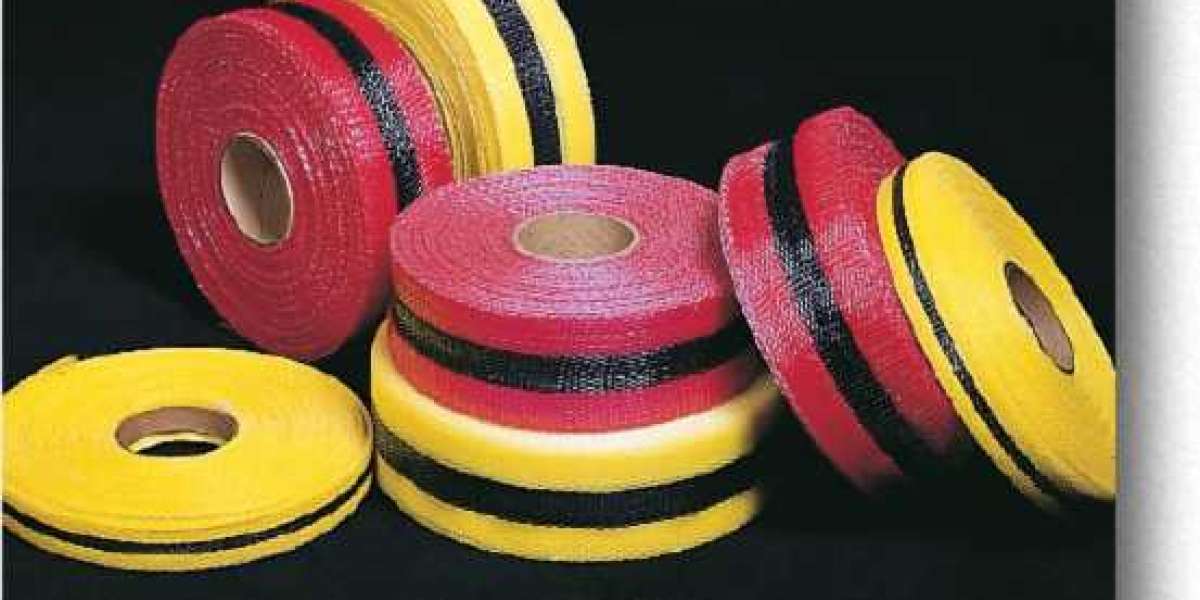In the world of construction and safety management, woven barricade tape plays an essential, albeit often overlooked, role. This versatile material, typically made from high-quality woven polypropylene or similar fabrics, serves as a reliable barrier to delineate hazardous areas, warn passersby of potential dangers, and ensure that work zones remain secure. From its production to its end-of-life, the lifecycle of woven barricade tape encompasses several critical stages, each contributing to its effectiveness in safety management practices.
Production: Creating a Reliable Barrier
The lifecycle of woven barricade tape begins at the production phase. Woven tape for barricades is manufactured using durable synthetic fibers which are interlaced to form a strong, flexible, and lightweight fabric. This woven structure not only provides the necessary strength to withstand environmental stresses but also allows for vibrant colors to be embedded within the fibers, ensuring high visibility. Safety professionals prefer woven safety tape for its durability compared to traditional plastic counterparts, which may tear or fade quickly under harsh conditions.
Manufacturers employ advanced technology to produce woven barricade tape that meets industry standards for safety and effectiveness. Reinforced edges are often included to prevent fraying, ensuring longer usability. Quality control measures are crucial during production to maintain the integrity of the final product, as Woven barricade tape for construction must endure a variety of environmental factors, including sun exposure, wind, and rain.
Application: Marking Hazards and Enhancing Safety
Once produced, woven barricade tape is distributed to construction sites and various industries where safety is paramount. The application phase is critical, as proper installation maximizes its effectiveness. Woven safety tape serves a variety of purposes, from marking off dangerous areas to controlling crowds. Construction sites utilize this tape extensively to outline unsafe zones, direct traffic away from hazards, and ensure that workers adhere to safety protocols.
The bright colors and bold lettering printed on woven barricade tape serve as immediate visual signals that warn onlookers of potential dangers. This is especially important in environments where visibility is limited, or hazards are not immediately apparent. By demarcating these areas, woven tape for barricades significantly reduces the likelihood of accidents and injuries on construction sites.
Furthermore, woven barricade tape is versatile – it can be easily rolled out and secured to various surfaces, making it suitable for temporary or long-term placements. This convenience allows for swift responses to changing site conditions, enabling the tape to be repositioned or removed as necessary, enhancing overall safety management.
The Role of Woven Barricade Tape in Daily Operations
During its operational phase, woven barricade tape maintains a critical presence at construction sites and special events. Safety officers and site managers understand the importance of vivid safety communication. Woven safety tape aids in reducing liability concerns by clearly outlining danger zones and encouraging compliance with safety regulations.
Its use promotes awareness among workers and the public alike, fostering a culture of safety. Moreover, woven barricade tape can be utilized in conjunction with other safety tools and techniques. For instance, signage and lighting can complement the visual signals provided by the tape, creating a comprehensive safety strategy.
Due to its strength and flexibility, woven barricade tape remains effective for multiple uses. Depending on the specific requirements and conditions of a project, it can be replaced without substantial financial or time costs. Its lightweight nature also makes it easy for teams to transport and deploy across various work areas, promoting agile responses to emerging risks.
Towards the End of Life: Issues of Disposal
Despite the numerous advantages woven barricade tape offers, the end of its lifecycle poses significant challenges, primarily concerning disposal. As safety professionals strive to maintain compliance with environmental guidelines, the disposal of woven safety tape requires careful consideration.
Unlike conventional plastic tape, woven barricade tape is often manufactured from non-biodegradable materials like polypropylene. Consequently, simply discarding it in landfills can have long-lasting environmental impacts. Many construction firms are beginning to recognize these effects and are actively exploring sustainable disposal methods.
Some companies may choose to recycle their woven barricade tape if facilities exist to process synthetic materials safely. Recycling not only diverts waste from landfills but also supports a circular economy, thereby mitigating the environmental footprint of construction activities. However, options for recycling woven materials can vary by location, making it essential for companies to conduct thorough research on available programs.
Future of Woven Barricade Tape
In light of growing awareness surrounding sustainability, manufacturers are beginning to innovate within the woven barricade tape market. Eco-friendly materials, such as biodegradable alternatives, are being developed as solutions to the environmental challenges posed by traditional woven safety tape. These alternatives can perform similarly while decomposing naturally at the end of their lifecycle.
Moreover, construction firms are actively seeking ways to integrate a sustainable approach to their safety practices. Some organizations are incorporating environmental policies that not only cover the responsible disposal of waste materials but also prioritize sourcing recyclable and biodegradable products for their operations.
As technology continues to advance and industry standards evolve, there is hope for the development of woven barricade tapes that align with both safety and sustainability. By nurturing this progressive outlook, it is possible to minimize the negative impacts caused by construction activities while maintaining the essential safety measures woven barricade tape provides.
Conclusion
The lifecycle of woven barricade tape, from its production through its use to its eventual disposal, encapsulates the pressing need for safety materials in the construction industry. Woven barricade tape for construction has proven its worth not only as a tool for delineating hazards but also as a facilitator of a safety culture among workers and the public. As we move towards a more environmentally conscious future, the evolution of woven safety tape will be instrumental in striking a balance between safety, usability, and sustainability. The journey of Woven tape for barricades does not end with its disposal; instead, it opens new avenues for innovation that can shape a safer and greener world.
Frequently Asked Questions (FAQs)
How should I dispose of used woven barricade tape?
Used woven barricade tape can often be recycled, depending on local waste management regulations. Check with your local recycling facility to determine if they accept materials made from polypropylene or polyester.
Can I print custom messages on woven barricade tape?
Yes, many manufacturers offer options to print custom messages or logos on woven barricade tape. This feature helps enhance safety protocols while promoting your brand.
Where can I buy woven barricade tape?
Woven barricade tape can be purchased from construction suppliers, safety equipment retailers, or online platforms specializing in industrial materials. Ensure that you buy from reputable suppliers to guarantee quality.














